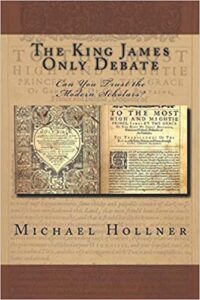 (Read part 1, part 2, part 3). Part 4 will cover chapter 1, “The King James Advantage.” This is one of only three chapters that has the same title as that listed in the table of contents. If “the KJV debate has already been won” and “we have already won the war” (p. 30), then why do new modern versions keep getting published and why are more and more Independent Baptists downplaying or ditching the KJV? Hollner guarantees us in this chapter that “nothing else but the truth is going to be presented in this book!” (p. 31). If this is the case, then everyone who bought a copy of the book should request a refund.
(Read part 1, part 2, part 3). Part 4 will cover chapter 1, “The King James Advantage.” This is one of only three chapters that has the same title as that listed in the table of contents. If “the KJV debate has already been won” and “we have already won the war” (p. 30), then why do new modern versions keep getting published and why are more and more Independent Baptists downplaying or ditching the KJV? Hollner guarantees us in this chapter that “nothing else but the truth is going to be presented in this book!” (p. 31). If this is the case, then everyone who bought a copy of the book should request a refund.
Regarding the King James translators, Hollner remarks: “many of them godly men” (p. 38). Just many of them? This implies that most of them were not godly men. He refers to the 27th edition of the Nestle-Aland text as if it were the last edition (p. 37), even though the 28th edition was published in 2012. He begins a sentence in the third person and then wrongly changes to the second person (p. 38). In his quote from Gesenius’ Hebrew Grammar, Hollner not only doesn’t give the page number (440), but fails to italicize two words and omits what Gesenius has in parentheses (p. 40). He completely butchers his quote from Dean John Burgon (p. 49), and doesn’t bother to cite the source (The Revision Revised, p. 16). His statement without explanation that “the King James Bible is a Holy Ghost inspired translation!” (p. 44) is troubling. The verse quoted at the bottom of page 34 that begins a new section should be at the top of the next page.
In addition to the misuse of quotation marks, capitalization, and apostrophes; the inconsistency in the use of Lord/LORD; the insertion of extraneous words: “KJV” (p. 33), “quote” (p. 34); and the annoying excessive use of underlining and all caps, I note the following: “mis-lead” for “mislead” (p. 30), “jesus” for “Jesus” (p. 32), “re-taught” for “retaught” (p. 32), “dis-respect” for “disrespect” (p. 33), “differs” for “differ” (p. 39), and “NAS” for “NASB” (pp. 39, 45). Stay tuned for the fifth installment, if I am able to make it through chapter 2 without having a brain aneurysm.
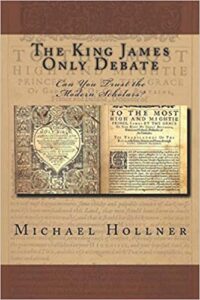 (Read
(Read As I have said from the beginning of The Preacher’s Library, this is not a book review blog. I have written scores of book reviews, and hope to eventually have them all posted at The Preacher’s Library
As I have said from the beginning of The Preacher’s Library, this is not a book review blog. I have written scores of book reviews, and hope to eventually have them all posted at The Preacher’s Library 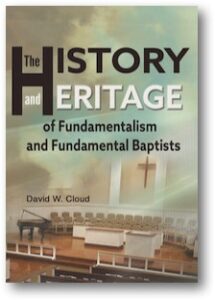 If you are looking for a book by an Independent Fundamental Baptist that “contains an extensive history of Fundamentalism in general and of fundamental Baptists in particular,” I recommend The History and Heritage of Fundamentalism and Fundamental Baptists (Way of Life, 2020), by David W. Cloud. The main sections of the book are 1. Interdenominational Fundamentalism, 2. Metropolitan Tabernacle, London, 3. Northern Fundamental Baptists, 4. Southern Fundamental Baptists, 5. Where Are Fundamental Baptists Today?, 6. New Testament Churches in the Last Days. The book is not on Amazon, but can be ordered from Way of Life Literature, www.wayoflife.org.
If you are looking for a book by an Independent Fundamental Baptist that “contains an extensive history of Fundamentalism in general and of fundamental Baptists in particular,” I recommend The History and Heritage of Fundamentalism and Fundamental Baptists (Way of Life, 2020), by David W. Cloud. The main sections of the book are 1. Interdenominational Fundamentalism, 2. Metropolitan Tabernacle, London, 3. Northern Fundamental Baptists, 4. Southern Fundamental Baptists, 5. Where Are Fundamental Baptists Today?, 6. New Testament Churches in the Last Days. The book is not on Amazon, but can be ordered from Way of Life Literature, www.wayoflife.org.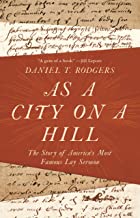 We have all heard America described as a city on a hill. The phrase comes from John Winthrop’s (1588-1649) “A Model of Christian Charity.” It is based on Matthew 5:14: “Ye are the light of the world. A city that is set on an hill cannot be hid.” If you have the time to do any reading in early American religious history, As a City on a Hill: The Story of America’s Most Famous Lay Sermon (Princeton, 2018) is a good supplement to whatever text you are reading.
We have all heard America described as a city on a hill. The phrase comes from John Winthrop’s (1588-1649) “A Model of Christian Charity.” It is based on Matthew 5:14: “Ye are the light of the world. A city that is set on an hill cannot be hid.” If you have the time to do any reading in early American religious history, As a City on a Hill: The Story of America’s Most Famous Lay Sermon (Princeton, 2018) is a good supplement to whatever text you are reading.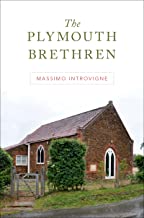
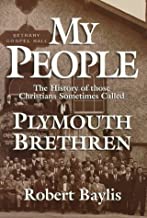
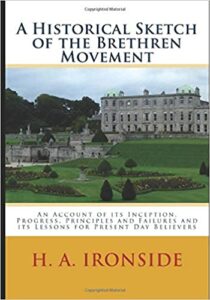
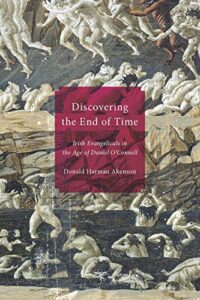 I have many unusual and relatively unknown books in my library that are extremely valuable. Two examples are: Discovering the End of Time: Irish Evangelicals in the Age of Daniel O’Connell (McGill-Queen’s University Press, 2016), and Exporting the Rapture: John Nelson Darby and the Victorian Conquest of North-American Evangelicalism (Oxford, 2018), both by Donald Harman Akenson. We all know, or we should know, about
I have many unusual and relatively unknown books in my library that are extremely valuable. Two examples are: Discovering the End of Time: Irish Evangelicals in the Age of Daniel O’Connell (McGill-Queen’s University Press, 2016), and Exporting the Rapture: John Nelson Darby and the Victorian Conquest of North-American Evangelicalism (Oxford, 2018), both by Donald Harman Akenson. We all know, or we should know, about 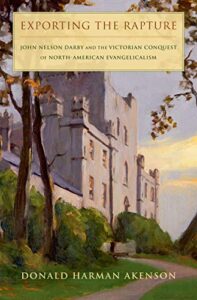 years before the Scofield Reference Bible (not invented it as many of the Reformed falsely assert). Although there is much in these books about Darby and his teachings and writings, they primarily explore the religious and cultural environment in which Darby lived in Ireland. These books are absolutely essential for understanding the life and times of John Nelson Darby.
years before the Scofield Reference Bible (not invented it as many of the Reformed falsely assert). Although there is much in these books about Darby and his teachings and writings, they primarily explore the religious and cultural environment in which Darby lived in Ireland. These books are absolutely essential for understanding the life and times of John Nelson Darby.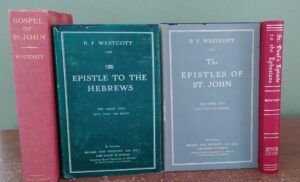
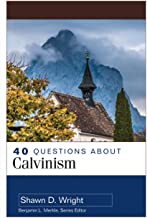 My
My